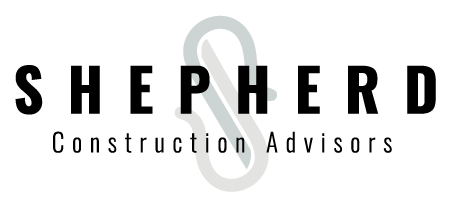EP 34 | Season 2 Highlights and the Best Pre-Construction Workflow for a Custom Home Build
In this episode:
In this final episode of Season 2 of the Your Project Shepherd Podcast, Curtis wraps-up the season’s highlights where the theme was “What does it cost?” Throughout the season, we explored the challenges of determining specific costs for many projects and emphasized the importance of defining a budget and effectively communicating it to the team. As we know, every project has its own set of unique challenges, and building a custom home is no exception.
During this episode, Curtis discusses some of the key takeaways from the season, including the danger of forcing a project beyond its budget, and the importance of recognizing the sunk cost fallacy.
Curtis will share the best pre-construction workflow, based on his expertise and the insights and experiences shared by the various experts we interviewed throughout the season.
We hope that you find this information helpful as you embark on your own custom home build projects. Stay tuned for Season 3 next month!
Host: Curtis Lawson
Business Title: Principal / Owner’s Representative
Company: Shepherd Construction Advisors/Crafted Custom Homes
Website: https://craftedhome.com/
Bonus: Accompanying every episode are show notes with links to guest speakers and other helpful sites mentioned in the podcast.
How to get in touch: Please let us know what questions you have and we will get back to you as soon as possible. You may email us at info@yourprojectshepherd.com.
Be sure to follow and subscribe
We are happy to share that we are available to listen/subscribe on these channels: Spotify, Apple Podcasts, iHeartRadio, and YouTube!



Full Transcript
CURTIS:
Hi everyone, welcome to the Season 2 wrap up show of the Your Project Shepherd Podcast. Just like we did at the end of season one, I wanted to briefly hit some highlights of what we talked about over these last 17 episodes where our theme was “What does it cost?” Now, I hope you weren’t too frustrated that you didn’t get a lot of concrete answers regarding cost.
There were a few times we got into specific numbers, but I hope that you saw for a lot of the things that we do. There’s just not a hard cost associated that we could give. It’s really about defining what you are able to or want to spend communicating that to your team and then designing to meet that goal.
That was especially true in the first four episodes where we talked about building a new custom home for house remodeling and additions, kitchen remodel and bath remodeling and a lot of other things that we talked about, like solar and battery storage, outdoor living, landscaping, and pools. Those were more driven by things like the size of the home and what features that you’re looking for.
So even though with that we weren’t able to get into specifics, I hope that those conversations were helpful to you. If you’re trying to plan a project and they help you understand what drives that cost. One of the big takeaway is that I want you to have in regard to cost is that you just can’t force it. You can’t fit a square peg into a round hole.
Once you built that team that you can trust in, that team tells you something can’t be done within a budget. Believe them. I see way too many instances of someone forcing their way through the design process, believing that they can get more than what they can afford and then they end up in a bad situation because they found maybe an unscrupulous contractor that told them what they wanted to hear just to get the job.
I mentioned this before, but it definitely they are saying again, people get caught up in something called the sunk cost fallacy. This means that they keep a process moving forward even after they were told it wasn’t going to work. They’ve already sunk time and money into designing something and they just believe there has to be someone out there who is going to give them what they wanted for what they want to spend.
And again, if you go out there looking for that, you’re always going to find somebody to tell you what you want to hear. And those people don’t always have bad intentions. Sometimes they just aren’t experienced either. There’s plenty of new or young builders who will tell you they can do something, and they really believe they can. The better don’t understand the complexities of what they’re getting into.
I often see this with modern homes or homes that have really clean, simple looking details. Customers and inexperienced builders both often perceive those as easy projects because they don’t see the complexity of what it takes to make it happen. So these folks get in over their heads and either they just can’t pull it off or maybe they do figure it out.
But now the cost of escalated to make it happen. In those instances, the builder is either going to eat it, which could make him disgruntled or even worse, insolvent. OR the homeowner is going to be forced to eat the cost in which that relationship is really going to be damaged. There’s great information out there on the Internet, but there’s probably worse information.
Facebook has a lot of discussion groups about construction – It’s like every topic out there. You can find a Facebook group for you. Those groups are ones where homeowners are asking each other for advice about building their custom home and often they’re like some contractors working on the groups, giving their input, too. So you’ve got people in different parts of the country from different income levels, different kinds of buildings and sizes and price ranges of homes.
On a Facebook group trying to compare costs and give advice, and none of them really know what they’re talking about, but they’re all convinced they know the right way. And many of them have already been burned by a contractor. So they’re turning to each other for help. So you’ll hear someone say something like, I’m in Tennessee and I design a custom home and all these builders are telling me it’s going to cost $300 a square foot.
I can’t believe it. I can’t afford that. Is that right? And then people from all over the country will chime in and say, Oh, no way. I just built a house in Ohio for $125 a square foot and somebody else will say, No, no, that’s cheap. My house in San Diego is $1,000 a square foot. Nobody has any clue how to compare those numbers.
I mean, heck, I can’t even compare those numbers because I don’t have enough information. So what happens is people end up finding somebody who tells them they can do it for that price. If you want to know how that usually turns out, go back and listen to season one of this podcast for the story that we talked about Brian and Heather.
You know, they thought that they could do it on their own. They thought that they could find somebody to do the project for what they thought it should cost. They found that person and then, well, go back and listen to how that story went. So all of that brings you back full circle to our to our central theme of the podcast, and that’s build your team.
First. And before you ever start design, communicate your budget to the team and then have the team design something that will work for you within your budget. Otherwise, you’re going to have nothing but disappointment. Everyone has to be a part of that conversation. Working together, the architect doesn’t know what it costs to build the build. The builder can’t give you a real cost without design and engineering.
The builder also can’t give you a real number without understanding what your interior design direction is and at least some of the major selections and finishes. So everyone has to be there. Here’s a quick rundown of what I think the best workflow is to go from where you’re just thinking about a custom home to having a complete set of plans and a contract and starting work.
So number one again is set your budget and be honest about what you were really able to spend or want to spend. This can be a 1-to-3-year process, so plan for ups and downs in the economy, stock market, maybe kids being born, kids going to college. All of those things can affect your financial position. Number two is building your core team.
It’s going to look a little bit different maybe on each home, but it’s going to at least include, you know, your architect, your home designer, builder, engineer, preferably the interior designer. And then, depending on the project, maybe some other specialty designers, like a pool designer or landscape lighting designer people like that. And if you’re busy or if it’s a complex project, you’re also going to need the owner’s representative.
And we’ll talk about that more. Enjoyed a minute. Number three is let your architect get to a set of conceptual design plans and then stop for a little bit. Stop and let the builder do a high-level budget check and make sure you’re within like a 10% cost range of your target. If so, move to the next step.
If not, step back and work together to figure out the strategy to get the cost down to within your range. Like I said earlier, don’t think that you can fit that square peg into the round hole. You’ve got to trust your team here. Step number four is going to be to let the architect move on. Move on to what most people call the design development drawings.
Now, this set of plans is going to be more detailed with more layers, more pages on the design. Then stop again. Let your builder do another budget check at this point and with the other information on the design development drawings, they should be able to take you from that, you know, plus or -10% range and tighten that down into a plus or -5% cost range.
And now, again, if that is within your budget, move forward. If not, take a step back and do a little value engineering at this point. Your builder and your architect should be able to work together to produce some solutions. Now we move forward to the construction document phase, which is step number five. And while the architect is working on this construction documents, if you have not done it already, make sure that you and your interior designer are getting the major finishes picked out.
And those are the ones that are either major expenses or affect other things, things like appliances, major plumbing fixtures, flooring, things like that. If you have not gotten to things like tile and hardware, that may be okay, depending on your situation. But make sure that your builder and your designer are in alignment with any allowances that you put in those items so that later on you do not get a surprise when something that you pick out is way more expensive than maybe what the builder was thinking.
Step number six is when the construction documents are issued. Now the builder should be able to get you to that tight final budget. No major backstabbing should be involved at this point, although there could be a little bit of a back and forth. You will have engineering in hand, so there should be no guessing from any of the subcontractors.
Your foundation framing all that stuff should be tight. The last step of your design process workflow. Step number seven is going to be getting a good contract and a clearly defined scope of work written. This is the step that even if a good team is built, I often see the ball get dropped. Remember that the scope of work and contract is what is going to define that relationship between you and your builder for the next year or two.
It is going to lay out how you are expected to work together. What happens if something goes sideways and then a detailed description of what it is you are getting. Do not rush through the step, have an attorney revere contract, and have somebody like me review the scope of work and the details. Even a good builder’s often going to miss something at this stage.
So an extra set of eyes or two on this paper will go a long way in the long run. So that is it. Those seven major design or preconstruction steps should get you to a really good budget into a construction contract and get some dirt moving. The last thing that I want to touch on today in this episode is what my services are as an owner, representative and construction consultant.
We talked about this in our last episode before this one where I interviewed fellow owner’s rep, Ed Earl. If you want to go back and get some more in-depth information on what an owner’s rep is and does, please go back and check that episode out. But at a high-level, when you hire an owner’s rep, we are looking out only for your interests.
We are not making money on construction or design. We are not trying to get photos of the project on social media or in a magazine to promote ourselves. We are only there to make sure the parties are working together toward your vision and make sure that you are getting what you want and need and are paying for. We are going to be helping you build that initial team.
We oversee the design process to make sure that your budget and design goals are met and then we are going to manage the construction process. We are going to oversee the builder and all the other parties that are involved. And then during construction, we will also do some quality control checks, and at the end, we are going to make sure that you understand how your home’s going to function and how to properly maintain it.
If you have a project that is already underway and you feel like you need help, we can do that too. Sometimes people get into their build, and they realize they do not have as much time as they thought. Or along the way they have lost trust in the builder, and they just need some help making sure things are done the right way.
Or maybe, things have totally, totally gone off the rails and you need help getting it back on track. Either way, an owner’s rep can step in and take the stress off of you and see that project through to completion. So if you want some more information about our owner’s rep services or consulting, please reach out to me on the website at your project Shepherd dot com or shoot me an email at KURTIS at your project Shepherd dot com.
So that is it. I hope you have enjoyed this second season of the Your Project Shepherd Podcast. I’ve really enjoyed being here with you and giving you this information. We’re going to take about a month off from this long form podcast. We have a great next season plan for you, which needs all time to finish that planning and get it recorded.
So I have about a month break here, but in the meantime, we’re still going to be posting some other short videos on our Instagram, Facebook, YouTube shorts, all those. So be sure and keep an eye out for that. Our next season is going to be all about building performance failures, and I’m going to have back TONER Kersting, who you’ve heard several times this year.
I’m going to have him back co-hosting the whole season and we have some great new expert guests to talk about why the different components of homes experience failure and how to prevent those. You’re not going to want to miss it if you’re getting ready to build your custom home. Thank you again for joining us on the podcast and I hope to see you again soon.
